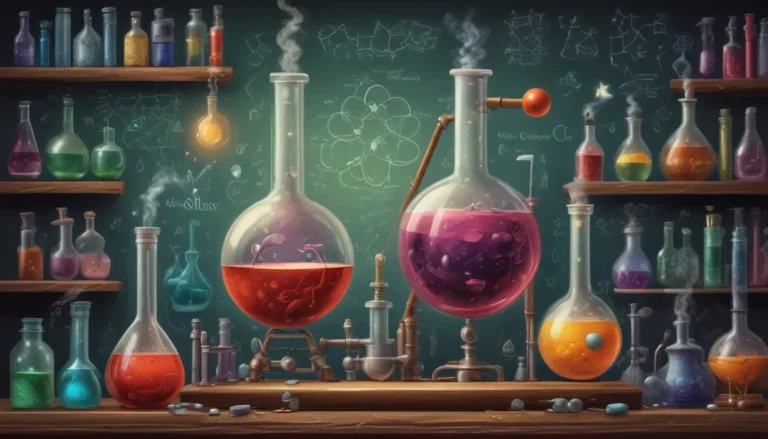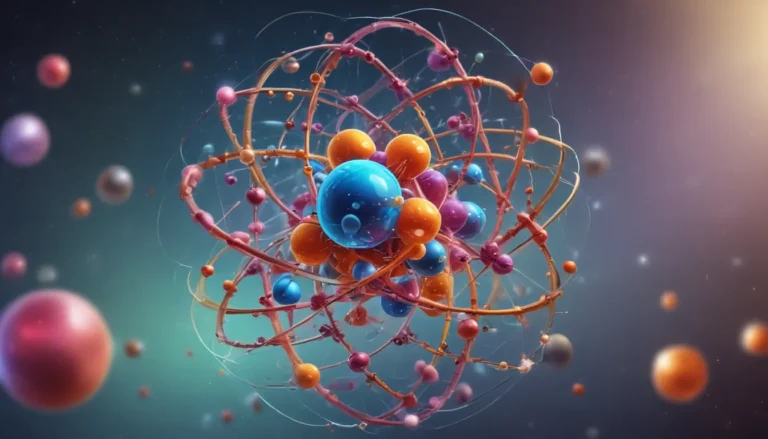A Note About Images: The images used in our articles are for illustration purposes only and may not exactly match the content. They are meant to engage readers, but the text should be relied upon for accurate information.
Chalcogens, also known as the oxygen family, encompass a group of elements in the periodic table with distinctive properties and characteristics. From oxygen to polonium, these elements play essential roles in various aspects of our lives, shaping our understanding of chemistry and the world around us. In this article, we will delve into the world of chalcogens and uncover 16 fascinating facts that highlight their significance in everyday life.
Unveiling the World of Chalcogens
Chalcogens, comprising oxygen, sulfur, selenium, tellurium, and polonium, belong to group 16 of the periodic table, also known as group VIA. These elements exhibit diverse chemical properties, participate in various chemical reactions, and play vital roles in biological systems.
The Origins of Chalcogens
The name “chalcogen” originates from the Greek word “chalcos,” meaning “ore” or “copper,” due to the association of these elements with metal ores. Oxygen, the most abundant chalcogen on Earth, makes up a significant portion of the Earth’s crust by mass.
Unique Characteristics of Chalcogens
Chalcogens display a wide range of properties, from the highly reactive nature of oxygen to the distinct smell of sulfur resembling rotten eggs. Tellurium, a semiconductor, finds applications in electronic devices like solar cells and infrared detectors. Additionally, chalcogens can exhibit multiple oxidation states, contributing to the formation of various compounds with unique properties.
The Role of Chalcogens in Our Lives
Chalcogens play vital roles in biological processes, environmental cycles, industrial applications, and technological advancements. From forming minerals to participating in environmental processes, these elements have a significant impact on our everyday lives.
Biological Significance of Chalcogens
Chalcogens are indispensable for life, with oxygen being crucial for respiration and selenium serving as a necessary component of enzymes. Additionally, several chalcogen compounds have medicinal properties, with selenium compounds known for their antioxidant and anticancer effects.
Industrial Applications of Chalcogens
Chalcogens find diverse applications across industries, such as sulfur being used in the production of fertilizers and rubber, and selenium being utilized in photocopiers and solar cells. Chalcogens can also form compounds with metals, known as metal chalcogenides, which exhibit interesting electrical and magnetic properties.
Environmental Importance of Chalcogens
Chalcogens play critical roles in environmental processes, including the sulfur cycle, decomposition of organic matter, and the production of greenhouse gases. Oxygen is essential for living organisms’ respiration, while selenium helps detoxify heavy metals in the environment.
Exploring the Fascinating World of Chalcogens
Chalcogens offer a glimpse into the wondrous world of chemistry, with their ability to form stable compounds and exhibit multiple oxidation states. Their historical significance, technological advancements, and contributions to scientific discoveries serve as a testament to their enduring impact on our lives.
Historical Significance of Chalcogens
The study and use of chalcogens have significantly influenced the history of science and technology, from the discovery of oxygen by Joseph Priestley to the development of selenium photovoltaic cells. These elements have continuously pushed the boundaries of knowledge and innovation.
Allotropes and Compounds of Chalcogens
Chalcogens can exist in different allotropes, with each allotrope having distinct properties. For instance, oxygen exists as both O2 (oxygen gas) and O3 (ozone). Chalcogens can also combine with other elements to form minerals, such as silicates formed by the combination of oxygen and silicon.
Conclusion: Embracing the Wonders of Chalcogens
From their diverse chemical properties to their significant roles in various industries and environmental processes, chalcogens truly are remarkable elements that shape our world. By understanding their importance and applications, we can gain a newfound appreciation for the intricate workings of our planet and the elements that contribute to its diversity.
FAQs: Unveiling More Insights About Chalcogens
- What are chalcogens?
-
Chalcogens are elements located in group 16 of the periodic table, including oxygen, sulfur, selenium, tellurium, and polonium.
-
What are the properties of chalcogens?
-
Chalcogens exhibit diverse properties, with the ability to form compounds with other elements and display both metallic and non-metallic characteristics.
-
What are some applications of chalcogens?
-
Chalcogens are used in various industries for different purposes, such as sulfur in fertilizers and selenium in electronic devices like solar cells.
-
Are chalcogens toxic?
-
While elements like oxygen and sulfur are essential and non-toxic, certain compounds of selenium, tellurium, and polonium can be toxic in large quantities.
-
Can chalcogens conduct electricity?
- Chalcogens can exhibit both metallic and non-metallic characteristics, with some elements like tellurium and polonium behaving as semiconductors or metallic conductors.
Dive Deeper Into the World of Chalcogens
Chalcogens offer vast opportunities for exploration and discovery, with their fascinating properties and applications enriching our understanding of the natural world. By embracing the wonders of chalcogens, we can gain a deeper perspective on the elements that shape our lives and propel scientific advancements forward. Let’s continue to appreciate the captivating world of chemistry and the enduring impact of chalcogens in shaping our world.






